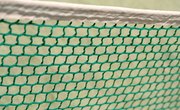
A father and son invented the first Wiffle ball in 1953 when the father watched the son trying to make a plastic golf ball curve while playing in their yard. After many experiments, the two discovered that by cutting eight oblong holes in the top half of a plastic ball, they could make the ball curve and move in various ways. Today, millions of Wiffle balls and Wiffe ball bats have been sold all over the world. You can play Wiffle ball anywhere, but specific rules apply for official Wiffle ball fields.
Items you will need
Measuring tape
Chalk
Plywood
Step ladder
Tape or paint
Cones
Choose a surface to play on, either dirt, grass, concrete or asphalt.
Mark the two foul lines from home plate with chalk, extending on the left and right side of home plate to the base of the foul poles, which can be fence posts, trees, or utility poles. Official wiffle ball fields should be enclosed with a fence or wall extended from one foul pole to the other. The fence or wall should be between four and 16 feet high. The distance from home plate to the foul poles should be between 80 and 105 feet. The distance from home plate to the base of the center field wall or fence should be between 95 and 125 feet.
Create a singles line with the chalk 42 feet from home plate extending from one foul line to the other. Make a doubles line 65 feet from home plate also extending from one foul line to the other. If a fielder catches the ball before it crosses the singles line the batter is out. if the ball goes past the singles line safely it is a base hit. The batter gets a double for balls crossing the doubles line safely. A ball hitting the outfield fence in the air is a triple. Any ball hit over the fence between the foul poles earns the batter a home run.
Measure a pitcher's rubber 42 feet from home plate. Do not build a pitcher's mound for Wiffle ball. The pitcher should be level with the batter when throwing.
Place a backstop three feet behind home plate. The backstop can be a piece of plywood measuring 4 feet by 8 feet propped up by a step ladder. Tape or paint a 30-inch tall and 22-inch wide strike zone 12 inches off the ground on the front of the backstop. A strike occurs if the pitch hits either inside the box or on the line and the batter does not swing.
Tips
- Use cones for foul markers and markers for singles and doubles if you do not have access to chalk.
References
Tips
- Use cones for foul markers and markers for singles and doubles if you do not have access to chalk.
Writer Bio
Greg Stone began writing professionally for various websites in September of 2010. He lives in Branson, Mo. and is the marketing director for Doulos Discipleship of Doulos Ministries. Stone holds a Bachelor of Science in journalism from Central Missouri University and a Master of Ministry from John Brown University.



